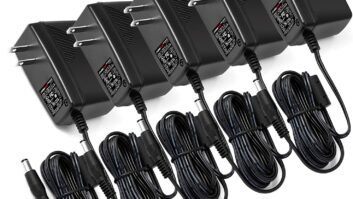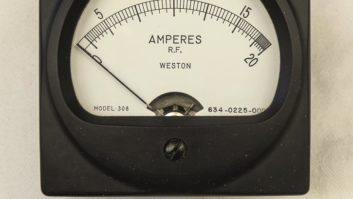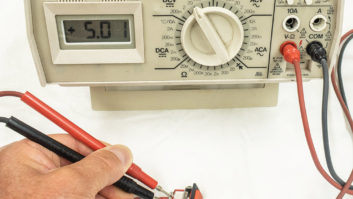Upon occasion, we want to measure voltages at a remote site that pose a problem for the remote control there.
Let me give you some examples:
- Battery voltage on a generator that is wired up with a positive ground
- Voltage developed across a resistor that is floating above system ground
- An antenna monitor output that is negative because the tower operates with a negative phase
The real issue is that many remote control analog inputs are unbalanced, with their common leads meant to be the negative return for voltage samples.
Regarding the generator being wired up as a positive ground: this can be problematic because you don’t really want to connect the + lead of the battery to the common lead for the remote control. A very large current surge could find its way through the wires you connect, burning them up and making of smoke. (Don’t just assume your generator battery is wired up for negative ground.) An isolation amplifier can be used to safely separate the battery system from your other system (probably wired up as 100% negative ground).
Another warning: If you need isolation between the device being measured and the remote control used to measure it, physically place the isolation amplifier as close to the device to be measured as you can.
A floating resistor could be used to measure current flowing through some device. An example: Some directional antenna arrays use vacuum relays for RF switching. If you have such a system you probably noticed that said vacuum relays don’t have auxiliary contacts that give you status as to their position. One way to determine if current is at least flowing through them is to put small-value resistor in series with their power supply, and use the voltage developed across that resistor to indicate current flow. Depending upon where you locate this, you may want to use an isolation amplifier to sample the voltage and send it off.
At least one current-model antenna monitor has a positive or negative voltage output that corresponds to positive or negative phase angle for a tower in a directional AM antenna array. One way to handle a negative tower sample voltage is to use an isolation amplifier to take the negative voltage output and turn it into a positive one compatible with your remote control.
Many years ago, Moseley manufactured an isolation amplifier used in similar situations. Today there are a few companies that make similar devices, but they’re known in the industrial world as “signal conditioners.”

Let’s take a look at the Automation Direct FC33. It’s meant to be mounted on a DIN rail and has input and output voltage ranges of either 0-5 VDC or 0-10 VDC. It has 1500 VDC of isolation between input and output, and 1500 VDC of isolation between the power supply input (24 VDC) and either the input or output. Since the input is floating, you can wire the input polarity as you see fit, without worrying about how it interacts with the output side.
Another option would be the Omega DRG-SC series, which is also meant to be mounted on DIN rail and features 1800 VDC of input/output/power supply isolation. 0-5 VDC and 0-10 VDC are its expected working voltages on the input and outputs sides.
Typical remote controls can be used to sample and measure all types of things at a transmitter or other remote site. Use caution any time the signal to be measured is “above” ground. Failure to do so can lead to equipment damage or unsafe conditions.












